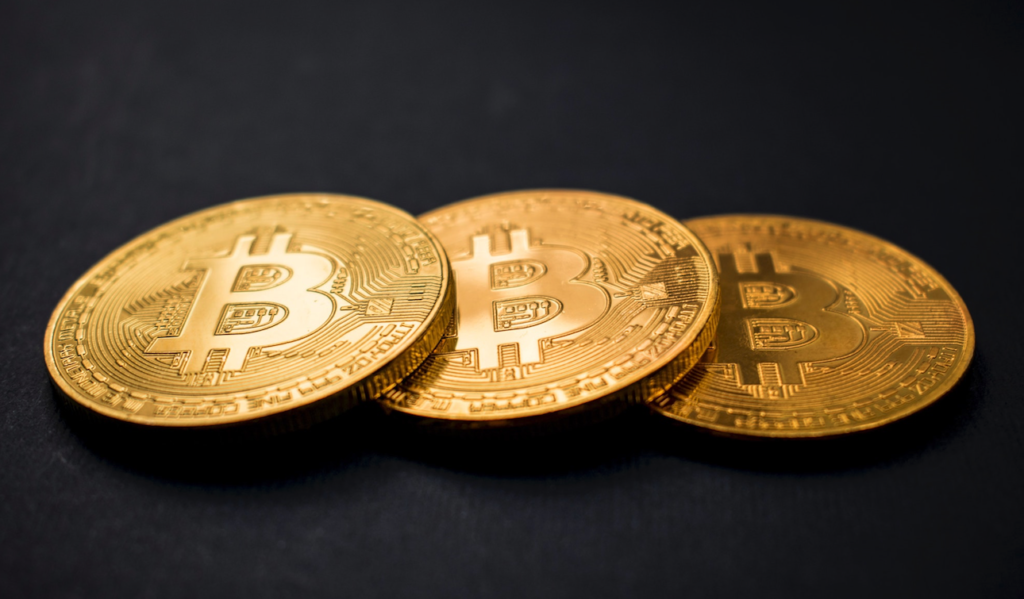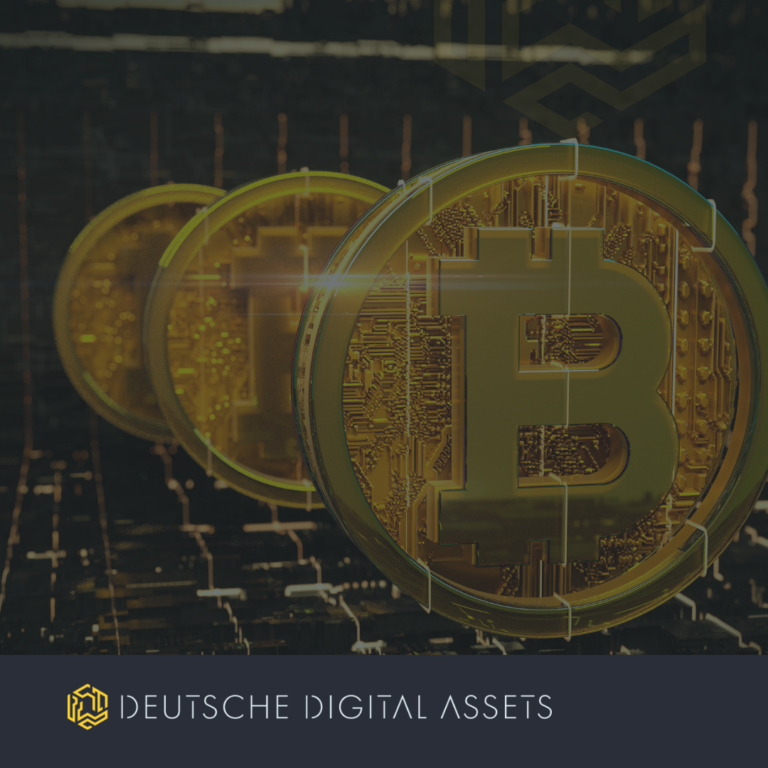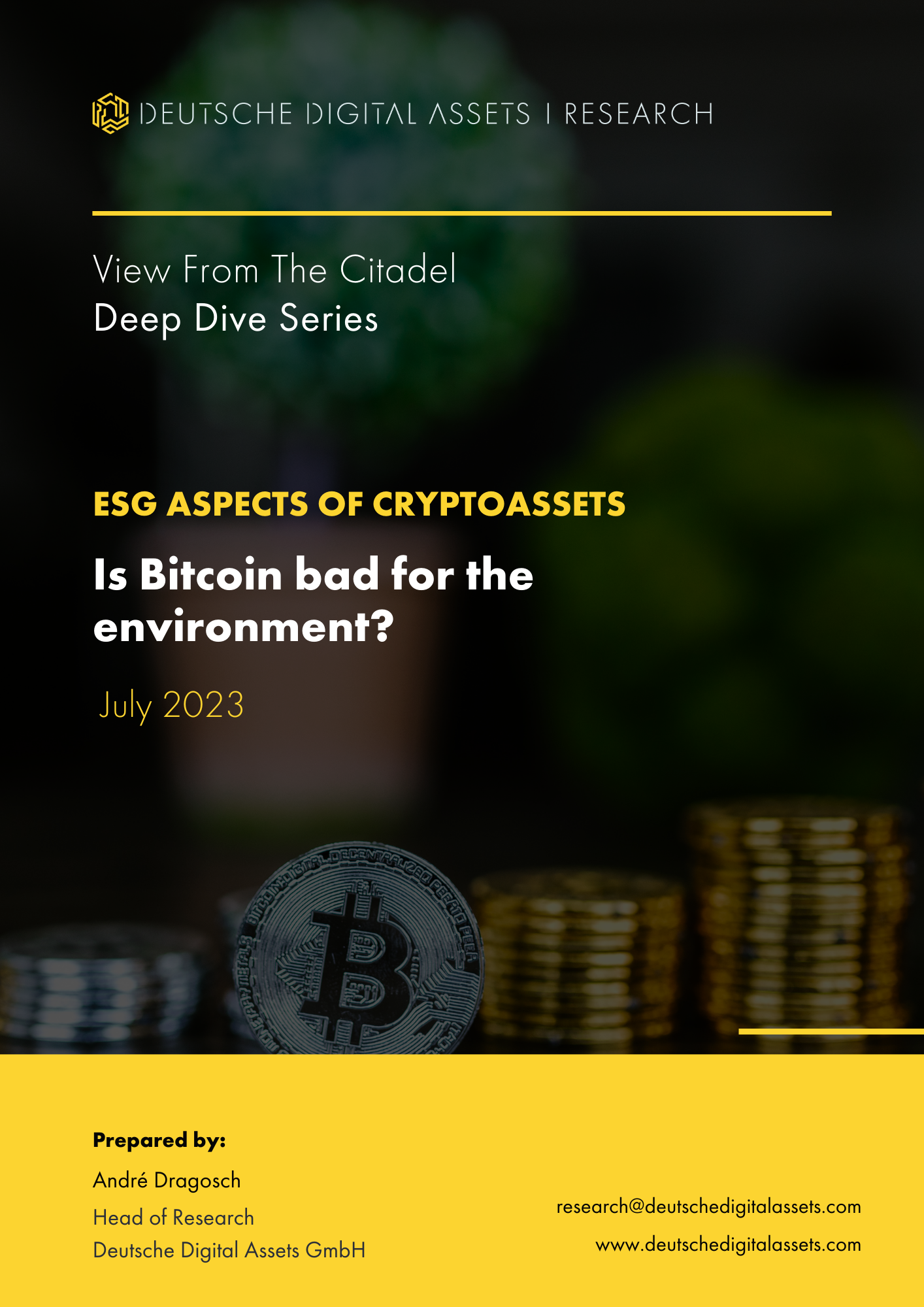Unter Patrick Lowry, CEO, Ikonische Holding
In der letzten Woche haben mich ein paar Dutzend persönliche Kontakte, meist Freunde oder Trinkkumpel, angesprochen, um mich über Bitcoin zu informieren. Sie wollten wissen, was Bitcoin ist, wie und wo sie ihn kaufen können, und einer fragte mich sogar: "Was bedeutet $15K, $16K oder $100K?" Nachdem ich damit fertig war, ungläubig den Kopf zu schütteln, wurde mir klar, dass die meisten Kleinanleger immer noch nicht wirklich verstehen, was Bitcoin ist oder was seine Werttreiber sind. Während Finanzinstitutionen und börsennotierte Unternehmen, wie Michael Saylors MicroStrategy, Bitcoin verstanden haben und Milliarden in ihn investiert haben, fehlt es gewöhnlichen Anlegern anscheinend an den notwendigen Ressourcen oder Informationen, um Bitcoin wirklich zu verstehen.
Meine Kollegen haben bereits ausführlich über Bitcoin geschrieben, daher möchte ich nicht noch einmal darauf eingehen. Bitcoin-Fakten oder die Auswirkungen aufzeigen Bitcoin hat bei Aufnahme in ein Standard-Investmentportfolio, oder auch wie man in Kryptowährungen investiertIch möchte mich darauf konzentrieren, die vielen Missverständnisse über Bitcoin auszuräumen. Leider gibt es eine Menge Fehlinformationen rund um das Flaggschiff der Kryptowährung und genug #FakeNews, um einen Politiker vor Neid erblassen zu lassen. Ich werde die häufigsten Mythen, die ich höre, direkt ansprechen und Sie dabei hoffentlich davon überzeugen, Bitcoin auf eigene Faust weiter zu erforschen und den Sprung zu wagen!
Mythos #1 - Bitcoin ist nicht durch irgendetwas gestützt
Dies ist die Kritik an Bitcoin, die ich am häufigsten höre. Obwohl Bitcoin als P2P-E-Bargeld konzipiert wurde, ist es wahr, dass es keine Rückendeckung durch eine Regierung, Zentralbank oder FDIC-Versicherung hat. Offen gesagt ist das das Schöne an Bitcoin, denn keine zentrale Partei kann einseitig endlos Geld drucken und ihre eigene Währung abwerten, wie es die Zentralbanken in diesem Jahr in Billionenhöhe getan haben, um COVID zu bekämpfen. Ungeachtet dieses Punktes ist der einzig wahre Wert des Geldes das Vertrauen, das seine Nutzer in es setzen. Einfach ausgedrückt: Der US-Dollar ist die Weltreservewährung, weil er derzeit die vertrauenswürdigste Form der Währung ist. Letzten Endes ist jeder Dollar jedoch nichts anderes als ein Schuldschein oder eine Schuld, für die wir der Zentralbank vertrauen. Abgesehen von diesem Versprechen ist der heutige Fiat-Dollar durch nichts anderes als das Papier, auf dem er gedruckt ist, abgesichert, und dennoch vertrauen wir darauf, dass die Regierung hinter ihm steht.
Auch hinter Bitcoin steht das gleiche Vertrauen, allerdings in einem ganz anderen Sinne. Bitcoin und sein Wert werden hauptsächlich durch zwei Quellen gestützt, denen wir vertrauen können: Der mathematische Code und die Milliarden an Kapital, die in das Bitcoin-Mining gesteckt werden, um das Netzwerk zu unterstützen und zu sichern. Ich werde hier nicht ins Detail gehen, denn der Code, die Anwendung der ökonomischen Spieltheorie und das Mining werden ausführlich in dem Buch meines Kollegen Bitcoin-Fakten Blog, aber die Kombination dieser Effekte schafft ein sicheres und vertrauenswürdiges Wertaufbewahrungsmittel, eine Rechnungseinheit und ein Tauschmittel, auch bekannt als Geld. Als Bitcoin ist die härteste Form von Geld der WeltDas bedeutet, dass es keiner Partei möglich ist, einseitig mehr Bitcoin zu drucken. Im Gegensatz zu Fiat ist Bitcoin eine äußerst vertrauenswürdige Form des globalen Geldes. Unterstützt durch die Milliarden, die von dezentralen Bitcoin-Mining-Gruppen für Betriebs- und Kapitalausgaben zur Aufrechterhaltung des Netzwerks aufgewendet werden, ist Bitcoin für Millionen Menschen auf der ganzen Welt eine vertrauenswürdigere alternative Geldform.
Fragen Sie sich selbst... vertrauen Sie mit Ihrem Geld eher Politikern oder unumstößlichen Berechnungen?
Mythos #2 - Jeder kann einfach einen neuen Bitcoin oder eine Kryptowährung herstellen
Derzeit gibt es etwa 100 Bitcoin-Hard-/Soft-Forks. Zusammen mit der Entwicklung von Smart Contracts auf Ethereum und anderen Chains hat dies zur Entwicklung und Einführung von Tausenden von Krypto-Assets geführt. Es ist technisch gesehen richtig, dass jeder seine eigene Kryptomünze erstellen kann. Allerdings handelt es sich dabei nicht um Bitcoin.
Diese Tatsache vernachlässigt, dass ein neuer Coin zwar ausgegeben werden kann, ihm aber im Vergleich zu Bitcoin die notwendige Infrastruktur fehlt. Wie ich bereits angedeutet habe, werden jährlich Milliarden in die Aufrechterhaltung des Bitcoin-Netzwerks durch Miner gesteckt, um seine Sicherheit zu gewährleisten, und dies deckt nicht einmal die Milliarden ab, die in die Erleichterung der Verwahrung, des Handels, der Liquidität, des Zahlungsverkehrs und anderer Dienstleistungen für Bitcoin fließen. Selbst Fidelity, einer der größten Vermögensverwalter der Welt, schürft selbst Bitcoin und bietet eine Fülle von Dienstleistungen rund um Bitcoin an. Außerdem kann keine Münze die Kombination aus Mathematik, Dezentralisierung und Spieltheorie so gut einfangen wie Bitcoin. Man kann nicht einfach einen neuen Bitcoin machen.
Zusätzlich zu diesen technischen und monetären Faktoren ist die Macht der Marke Bitcoin nicht zu unterschätzen. Bitcoin ist der unangefochtene Blue-Chip unter den Kryptowährungen und ist Milliarden von Menschen auf der ganzen Welt bekannt. Sogar Twitter hat einen #Bitcoin-Hashtag mit dem berüchtigten orangefarbenen "B"-Symbol kreiert, um seine Markenstärke zu unterstreichen. Wie Dan Held von Kraken uns ständig daran erinnert, "Bitcoin-Marketing funktioniert", und es positioniert Bitcoin als die Premium-Marke des Krypto-Raums, wenn nicht sogar des Währungsraums. Jeder Mensch hat eine Marke, sei es Apple, Google, Coinbase oder eine andere, mit der er sich identifiziert und für die er einen Aufpreis zahlt. Das trifft zweifellos auch auf Bitcoin zu.
Einfach ausgedrückt: Man kann eine neue Münze technisch neu erschaffen, aber sie kann Bitcoin niemals ersetzen.
Mythos #3 - Bitcoin können nicht für irgendetwas ausgegeben werden
Sie können Bitcoin überall ausgeben, wo VISA oder Mastercard akzeptiert werden. Lassen Sie mich dies wiederholen, denn es ist ein unglaublich wichtiger Punkt.
SIE KÖNNEN BITCOIN ÜBERALL AUSGEBEN, WO VISA UND MASTERCARD AKZEPTIERT WERDEN.
Dutzende von Unternehmen haben Krypto-Debitkarten entwickelt, darunter Binance, Coinbase und mehr. Mit diesen Karten können Sie nahtlos Bitcoin ausgeben, um Lebensmittel zu kaufen, Einkäufe bei Amazon zu tätigen oder die Barrechnung für Ihre Freunde (oder mich) zu übernehmen, wenn Sie sich großzügig fühlen. Wenn Sie Kryptowährungen für Zahlungen halten, erhöht sich Ihre Kaufkraft, da die Kryptopreise im Vergleich zu USD oder Fiat steigen. Zwar sind die Gebühren für die Verwendung solcher Karten im Vergleich zu den heute üblichen Zahlungsmethoden relativ hoch, aber ich gehe davon aus, dass diese Gebühren rapide sinken werden, wenn neue Akteure in den Markt eintreten und Krypto-Zahlungen mit VISA oder Mastercard zur Regel werden.
Ehrlich gesagt weiß ich allerdings nicht, warum Sie Bitcoin im Moment für irgendetwas ausgeben sollten. Ich bin Hodling.
Mythos #4 - Bitcoin wird hauptsächlich für illegale Aktivitäten und Geldwäsche verwendet
Eines der größten Missverständnisse über Bitcoin ist, dass er privat und anonym ist. Da Bitcoin 100% transparent ist, was bedeutet, dass keine Aktion, die auf der Blockchain stattfindet, versteckt werden kann, ist er alles andere als privat, sondern genau das Gegenteil von privat. Jede Transaktion, die auf der Bitcoin-Blockchain stattfindet, kann von jeder Person auf der Welt zu jeder Zeit eingesehen werden. Auch wenn die öffentlichen Wallet-Adressen für Bitcoin anfangs nicht spezifisch an eine individuelle Identität gebunden sind, ist es recht einfach, das Ausgabeverhalten zu verfolgen, die Identität der Wallet-Besitzer zu ermitteln und ruchlosen Transaktionen in Bitcoin Einhalt zu gebieten. So gehörten das FBI und die bulgarische Regierung zu einem bestimmten Zeitpunkt zu den weltweit größten Bitcoin-Besitzern, nachdem sie wegen illegaler Aktivitäten verhaftet worden waren.
Chainanalysis, ein globales On-Chain-Analyseunternehmen, das Bitcoin und andere führende Kryptowährungen überwacht, hat eine gründliche Untersuchung aller Transaktionen durchgeführt, die in Bitcoin in Krypto stattfinden. Bei der BY-Beobachtung und Verfolgung aller On-Chain-Transaktionen kamen sie zu dem Schluss, dass etwa 1,1% der $1 Billionen der im Jahr 2019 getätigten Transaktionen waren mit illegalen Aktivitäten verbunden. Eine weitere Analyse zeigte, dass nur .46% der Bitcoin-Transaktionen waren mit illegalen Aktivitäten verbunden. Dem steht die Tatsache gegenüber, dass 90% der im Umlauf befindlichen Dollar enthalten Spuren von Kokainund es ist klar zu erkennen, welche Währung wesentlich häufiger für illegale Aktivitäten verwendet wird, und dabei ist der Betrug im Bankensektor noch gar nicht berücksichtigt.
Mythos #5 - Bitcoin kann und wird von Regierungen/Regulierungsbehörden abgeschaltet werden
Dieses Missverständnis höre ich eher von Finanzinstituten und großen Unternehmen als von Kleinanlegern oder Nutzern. Verständlich, denn diese Gruppen müssen erhebliche Risiken managen, wobei das regulatorische Risiko wohl das größte ist, dem sie in allen Facetten ihrer Geschäfte ausgesetzt sind. Tatsache ist, dass Regierungen theoretisch den Schalter umlegen und die Nutzung, den Handel und die Lagerung von Bitcoin verbieten können. Dies wurde in China angedroht, wenn auch nur locker durchgesetzt, so dass es denkbar ist, dass andere Regierungen diesem Beispiel folgen werden. Sogar die Vereinigten Staaten könnten, vielleicht im Namen der nationalen Sicherheit, Bitcoin verbieten, aber ich würde behaupten, dass dies streng verfassungswidrig wäre.
Jeder Versuch einer Regierung, Bitcoin abzuschalten, spielt jedoch genau in die Hände des Narrativs, das Bitcoin so vielversprechend macht. Bitcoin ist als ein Geldsystem konzipiert, das völlig unabhängig von der Regierung und den Banken ist. Das macht es nicht per se illegal, sondern macht es lediglich nicht abhängig von der Regierung. Ein solcher Versuch könnte Bitcoin nicht einmal lahmlegen. Getreu der Spieltheorie, die hinter dem Bitcoin-Netzwerk steht, sollte keine Partei jemals einseitig in ihrem eigenen Interesse handeln und Bitcoin verbieten. Regulierungsarbitrage würde sich im Ausland durchsetzen, was es Ausländern ermöglichen würde, die Vorteile von Bitcoin zu nutzen und die einheimische Bevölkerung zu entmündigen. Die einzige Lösung besteht darin, ein Gleichgewicht zu finden, in dem alle globalen Parteien die Existenz von Bitcoin weiterhin ermöglichen und ihm helfen müssen, zu gedeihen oder zurückzufallen.
Dies berührt noch nicht einmal die Tatsache, dass es buchstäblich unmöglich ist, die verteilte und dezentralisierte Natur des Bitcoin-Netzwerks abzuschalten. Keine Regierung oder Organisation könnte jemals gleichzeitig
Mythos #6 - Bitcoin ist zu teuer und ich habe nicht genug, um einen zu kaufen
Ich weiß, dass dies für diejenigen, die mit Kryptowährungen vertraut sind, albern klingt, aber ich werde dies oft von Nicht-Coinern gefragt, die es einfach nicht besser wissen, weil es ihnen niemand erklärt hat.
Einer der Hauptvorteile von Kryptowährungen ist, dass fast alle Vermögenswerte fraktioniert oder in viele Teile teilbar sind. 1 Bitcoin ist zum Beispiel bis zu 8 Dezimalstellen teilbar, was bedeutet, dass die kleinste Menge an Bitcoin, die man besitzen kann, 0,00000001 Bitcoin ist. Wir nennen diese mikroskopische Einheit "Satoshi" oder "Sat" nach dem Gründer von Bitcoin, Satoshi Nakamoto. Wenn Bitcoin einen Preis von $100.000 pro Bitcoin erreicht, wird jeder Satoshi $0,001 oder 1/10 wert sein.th eines Penny. Diese Einheit ist leicht zu erwerben und im Bitcoin-Netzwerk nutzbar.
Mythos #7 - Bitcoin tötet die Umwelt
Es ist kein Geheimnis, dass das Mining von Bitcoin eine beträchtliche Menge an Energie benötigt. Schätzungen zufolge verbraucht das Bitcoin-Mining etwa 66,7 Terawattstunden pro Jahr, was etwa 0,21% des weltweiten Gesamtenergieverbrauchs entspricht. Dies entspricht in etwa dem Energieverbrauch der Schweiz. Mit dem Wachstum von Bitcoin steigt auch sein Energiebedarf. Das ist eine Menge Strom, und das muss sich natürlich negativ auf die Umwelt auswirken, oder? Nun, nicht unbedingt.
Niemand, der bei klarem Verstand ist, würde behaupten, dass Bitcoin keinen Kohlenstoff-Fußabdruck hinterlässt (das tun wir alle), aber der Großteil der Bitcoin-Mining-Energie wird aus nachhaltigen Quellen erzeugt. Über 74% Bitcoin-Schürfleistung wird schätzungsweise aus erneuerbaren Quellen erzeugt, und die Bergbauunternehmen arbeiten daran, immer effizienter zu werden, indem sie ihren Standort in kältere Gegenden verlegen und überschüssige, ungenutzte Kapazitäten nutzen. A aktuelle akademische Studie sogar festgestellt, dass die Auswirkungen von Bitcoin auf die Umwelt überbewertet wurden und mit effizienteren Mining-Geräten, dem Zugang zu nachhaltigeren Ressourcen und der Verlagerung der Miner in kühlere Klimazonen abnehmen würden.
Auch wenn Bitcoin wahrscheinlich nie kohlenstoffneutral sein wird, vor allem, wenn es große Miner in kohlebetriebenen Volkswirtschaften wie China gibt, kann er eine praktikable und kohlenstofffreundliche Alternative darstellen. Viele Bitcoin-Befürworter haben argumentiert, dass der Umstieg auf Bitcoin oder digitales Geld und weg von Fiatgeld tatsächlich ein Nettopositiv für die Umwelt ist. Theoretisch mag das stimmen und sogar Sinn machen, aber ich habe noch keine fundierte Analyse gesehen, die diese Behauptung unterstützt. Die Zeit wird es zeigen, aber es ist unbestreitbar, dass Bitcoin-Miner einen Anreiz haben, effizienter zu werden und nachhaltige Ressourcen zu nutzen, um gesunde Gewinnspannen zu erhalten.
Mythos #8 - Bitcoin kann gehackt werden
Es ist unmöglich, Bitcoin zu hacken. Punktum. Die kryptographische Technologie und die mathematische Spieltheorie, die das Bitcoin-Netzwerk antreiben, sind unbesiegt und werden es für immer bleiben.
Was jedoch gehackt werden kann, sind Wallets, Börsen und Vermittler, die Bitcoin-Nutzern Dienstleistungen anbieten. Auf die gleiche Weise, wie Unternehmen, Banken und Regierungen Milliarden von Geldern ihrer Nutzer verlieren (scheinbar täglich), liegt die Schwachstelle im Bitcoin-Geldsystem bei den Intermediären. Aus diesem Grund sagen wir in der Kryptowährung "nicht deine Schlüssel, nicht dein Bitcoin", was sich auf das Risiko bezieht, dein Vermögen auf einer Börse oder bei einer anderen Partei zu speichern.
Mythos #9 - Bitcoin ist nicht skalierbar
Dies ist der einzige Mythos, der irgendwie stimmt. Bitcoin ist in seiner aktuellen Form nicht wirklich skalierbar. Im besten Fall kann Bitcoin magere 7 Transaktionen pro Sekunde verarbeiten. Wenn man dies mit den Zehntausenden pro Sekunde von VISA vergleicht, ist es leicht zu verstehen, warum die Skalierbarkeit oft als die Hauptbremse für Bitcoin angeführt wird.
Bitcoin selbst muss jedoch nicht skalierbar sein. Da Bitcoin sich weiterhin seine eigene Nische als digitales Wertaufbewahrungsmittel sucht, kann das Netzwerk in seiner jetzigen Form nicht skalierbar sein und trotzdem erfolgreich sein. Zahlungslösungen, die über Paypal, Mastercard und Visa darauf aufgebaut werden, werden weiterhin die Abwicklung von Transaktionen für Waren und Dienstleistungen in Echtzeit ermöglichen, ohne dass man sich um die Geschwindigkeit der Blockverarbeitung sorgen muss. Ja, das bedeutet, dass Vermittler involviert sind, aber das ist nicht anders als die Art und Weise, wie wir unser derzeitiges Finanzökosystem nutzen. Bitcoin wird, ähnlich wie SWIFT, SEPA oder andere Abwicklungstechnologien, zum Backend, das das globale Finanznetzwerk sichert.
Es ist auch vorstellbar, dass Zwischenhändler nicht mehr benötigt werden, weil das Netzwerk seine Skalierbarkeit selbst erreicht. Projekte wie das Lightning-Netzwerk, eine zweite Schicht über Bitcoin, die den Durchsatz erhöht, könnten Bitcoin eines Tages selbständig für Zahlungen nutzbar und effizient machen. Solange solche Lösungen noch in der Produktion sind, würde ich Bitcoin noch nicht als skalierbar in der Zukunft betrachten.
Ich hoffe, ich konnte Sie ein wenig über Bitcoin aufklären und die falschen Vorahnungen, die Sie vielleicht hatten, ausräumen. Ich möchte Sie ermutigen, auf eigene Faust weiter zu recherchieren oder uns bei Iconic zu kontaktieren, damit Sie mehr erfahren und sehen können, ob Bitcoin und Kryptowährungen für Sie geeignet sind. Die Adoption ist da, und ich wäre nachlässig, wenn jemand diese einmalige Gelegenheit verpassen würde, weil er nicht mit den entsprechenden Informationen ausgestattet ist.
- 50 Bitcoin-Fakten
- Dr. Satoshi oder: Wie ich lernte, den (risikobereinigten) ROI zu verdoppeln und den Bitcoin zu lieben
- Korrelationen in der Portfoliotheorie
_ _ _
Haftungsausschluss
In keinem Fall können Sie die ICONIC HOLDING GMBH, ihre Tochtergesellschaften oder eine mit ihr verbundene Partei für direkte oder indirekte Anlageverluste haftbar machen, die durch Informationen in diesem Artikel verursacht wurden. Dieser Artikel ist weder eine Anlageberatung noch eine Empfehlung oder Aufforderung zum Kauf von Wertpapieren.
Die ICONIC HOLDING GMBH ist in keiner Rechtsordnung als Anlageberater registriert. Sie erklären sich damit einverstanden, Ihre eigenen Nachforschungen anzustellen und Ihre Sorgfaltspflicht zu erfüllen, bevor Sie eine Investitionsentscheidung in Bezug auf die hier besprochenen Wertpapiere oder Investitionsmöglichkeiten treffen.
Unsere Artikel und Berichte enthalten zukunftsgerichtete Aussagen, Schätzungen, Prognosen und Meinungen, die sich als wesentlich ungenau erweisen können und von Natur aus erheblichen Risiken und Unsicherheiten unterliegen, die außerhalb der Kontrolle der ICONIC HOLDING GMBH liegen. Unsere Artikel und Berichte drücken unsere Meinungen aus, die wir auf der Grundlage allgemein verfügbarer Informationen, Feldforschung, Schlussfolgerungen und Ableitungen durch unsere Due Diligence und unseren analytischen Prozess gewonnen haben.
Die ICONIC HOLDING GMBH geht davon aus, dass alle hierin enthaltenen Informationen korrekt und zuverlässig sind und aus öffentlichen Quellen stammen, die wir für korrekt und zuverlässig halten. Diese Informationen werden jedoch "wie besehen", ohne jegliche Garantie, präsentiert.
















